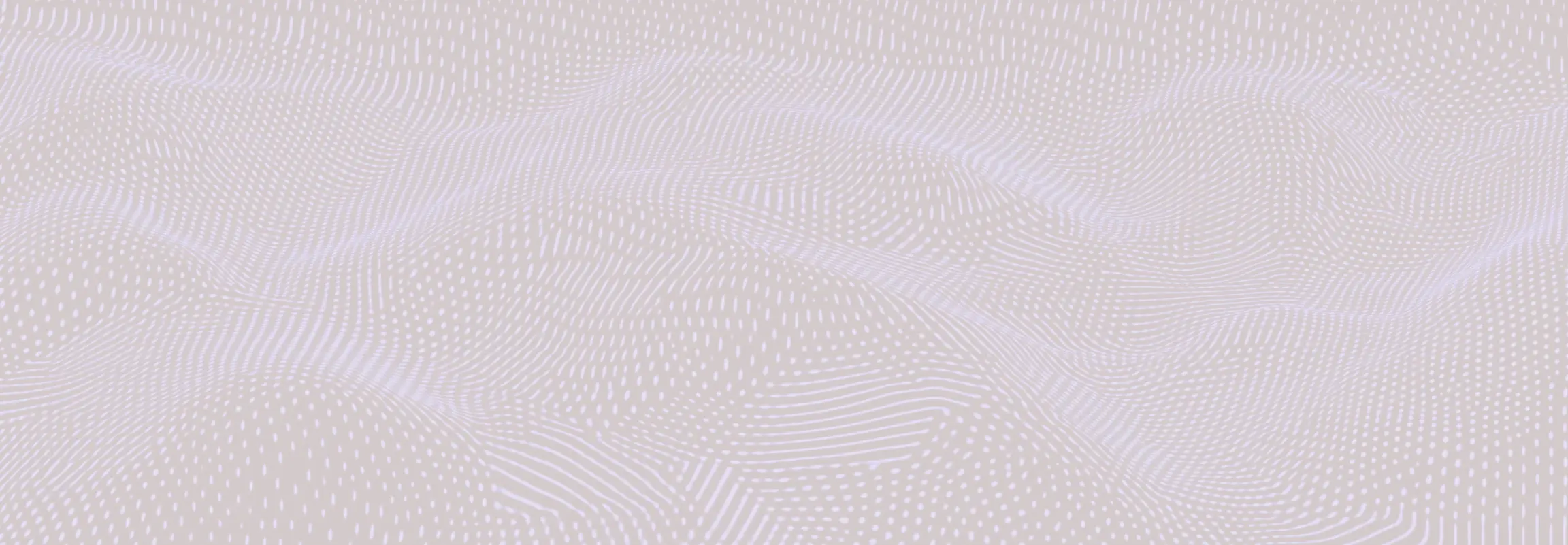Introduction
Both mindfulness and psilocybin-induced experiences (AKA tripping) may be able to reduce the symptoms of mental health conditions such as depression, anxiety, and addiction, while also increasing feelings of well-being. Could pairing the two further aid in the recovery from some mental health conditions?(1)
A study conducted by the Zurich Psilocybin Research Group attempted to find out.
What is Psilocybin, and What Does it Do?
Psilocybin is the active chemical found in the psilocybe family of mushrooms (AKA magic mushrooms). A member of the classical group of psychedelics (which includes DMT, ayahuasca, LSD, mescaline, and peyote), psilocybin affects the body’s serotonin system after being converted into psilocin in the gut. In high doses, psilocybin induces deep, trance-like states commonly known as a “trip.”
While in this state, individuals may experience euphoria and visual and auditory hallucinations such as geometric patterns, bright colors, and movement tracers. Additionally, many people report a heightened sense of connection to the world around them. Some may even feel as if they’ve essentially dissolved into the universe itself. This is known as a state of “oneness,” or ego dissolution. Another possibility is enhanced feelings of empathy for family and friends.
Keep Up with Psychedelic Trends
Don’t miss the latest psychedelic news, events, companies, and more.
We respect and protect your privacy. By subscribing your info will be subject to our privacy policy. Unsubscribe easily at any time
Recent discoveries indicate that psilocybin may be a potent medicine in the fight against certain mental health conditions. For example, a Phase II clinical trial (which assesses a new drug’s safety and efficacy) conducted by COMPASS Pathways, utilizing psilocybin for treatment-resistant depression (TRD), found that 29% of participants entered remission within one week of treatment. Impressive results like these have spurred further research into this promising family of chemical compounds.(2)
Studying the Therapeutic Effects of Psychedelics
Nearly one in five people in the United States has a mental health condition. More than 21 million people in the country struggle with addiction. The magnitude of these numbers only emphasizes the need to find new and better treatment options.(3, 4)
The Zurich Psilocybin Research Group at Zurich University is dedicated to exploring the potential therapeutic effects of psychedelics for psychiatric and mental health conditions. Its research focuses on understanding the transformative experiences and psychiatric healing associated with psychedelic compounds like psilocybin. Recognizing current limitations, the group aims to create innovative treatments that will make a difference for patients.
Recent research by the group revealed how a psilocybin-induced psychedelic experience combined with five-day mindfulness training affects the brain. The study is the first to use neuroimaging techniques to investigate psilocybin and mindfulness in a retreat setting.
When ingested, psilocybin impacts the body’s serotonin system, starting in the gut, and causing an increase in the available serotonin in the brain. This then impacts multiple parts of the brain and induces an altered state of consciousness. While these changes can be psychologically taxing for some, many report positive transformative experiences, increased insight, and heightened emotional awareness. Despite psilocybin’s controversial standing over the years, acceptance of its use as a therapeutic tool is growing, and cutting-edge research is taking place in the world’s best universities.
What is Mindfulness?
Mindfulness is typically described as “an objective, nonreactive awareness of the present moment.” It’s often achieved by staying grounded in the moment and paying close attention to one’s current feelings, thoughts, physical sensations, and surroundings. Although some people are naturally inclined towards these states, mindfulness can be learned through meditation practice.(5, 6)
Keep Up with Psychedelic Trends
Don’t miss the latest psychedelic news, events, companies, and more.
We respect and protect your privacy. By subscribing your info will be subject to our privacy policy. Unsubscribe easily at any time
The Benefits of Psychedelics and Practicing Mindfulness
Both psilocybin-induced experiences and mindfulness meditations are associated with increased feelings of personal well-being, improved coping strategies, and decreased symptoms of addiction, anxiety, and depression. Subjective study data and neuroimaging studies (in which images of the brain are examined) confirm that both mindfulness and psychedelic-induced experiences have therapeutic properties. Determining whether combining them may offer enhanced benefits could take research, and the potential to help people, to the next level.(1)
Individuals who take psilocybin often experience similar effects to those who practice advanced meditation. This is in terms of both subjective feelings and brain activity. Both can lead to an experience of ego dissolution, as mentioned, in which the individual experiences a lessened sense of self, and self-transcendence. In this state, a person can relate to something greater than the self. One theory is that this state is a result of changes in one of the brain’s major networks—the default mode network (DMN).(7, 8)
What is The DMN?
The DMN is a brain-wide network connecting parts of the brain that aren’t close to each other, allowing them to work together.
The DMN is active during the following mental activities:
It also plays a major role in memory, wakefulness, awareness, and other cognitive behaviors.(9)
The two major regions in the DMN are the medial prefrontal cortex (mPFC) and posterior cingulate cortex (PCC). In general, the mPFC is involved in focused attention, carrying out tasks, and conscious awareness.
It’s responsible for the following:
On the other hand, the PCC is involved in:
The Zurich Psilocybin Research Group’s study investigates what effect psilocybin-assisted therapy has on the DMN. It explores how the neurodynamic changes brought on by the psychedelic (which affects how the nervous system communicates internally and with the muscles) impact cognition and felt experiences. In other words, how is psychedelic medicine impacting how we think and experience the world?
How the Psilocybin DMN Study Was Conducted
Researchers chose 38 participants with significant meditation experiences. The selection process considered their age, gender, experience, and trait of mindfulness (which is a person’s innate capacity for mindfulness). Each participant was randomly assigned to either the psilocybin or placebo group, and both groups participated in a structured five-day silent mindfulness meditation course derived from Japan’s Zen tradition.(10)
The study had a randomized, double-blind, placebo-controlled design. This means whether participants received the placebo or not was randomized, and neither the participants nor researchers knew who was in which group.
The active group received a moderate-to-high dose of psilocybin based on their body weight. Researchers chose a dose they believed was sufficient to elicit significant changes in consciousness without being too psychologically taxing. The placebo group received lactose instead of psilocybin. Whether they received psilocybin or a placebo, all study participants received doses by injection at 10:30 a.m. on the fourth day of the silent retreat.
Researchers took functional magnetic resonance imaging (fMRI) scans of participants’ brains the day before and the day after the retreat. These fMRI scans let researchers measure any changes to blood flow due to brain activity. The imaging let them measure participants’ baseline brain activity and see if the intervention had any effect.
However, while fMRIs directly measure brain activity, they don’t measure participants’ feelings. To accomplish this, researchers had all participants fill out two questionnaires:
Researchers then analyzed the data to identify treatment effects and determine the differences between the groups.
What Researchers Concluded from the Psilocybin and Mindfulness Study
Researchers ultimately concluded that a single dose of psilocybin combined with mindfulness training might create a positive experience involving ego dissolution and self-transcendence. It can lead to the positive subjective feeling of oceanic self-boundlessness (OSB), which is a spiritual state of mind that involves insightfulness, unity, and bliss. This pleasant, mind-altering, and often transformative experience can be linked to a lessened connection between the two brain regions in the DMN.(11)
This may aid in alleviating depression symptoms by reducing activity in the DMN, the brain region responsible for rumination, thinking of the past, and introspection. Some researchers hypothesize that this lowered activity, and thus reduced rumination, can alleviate some of the symptoms of depression by reducing negative and intrusive thoughts. Furthermore, two other regions associated with the DMN also exhibit less activity.
These two regions — the medial prefrontal cortex (mPFC) and posterior cingulate cortex (PCC) — normally work together, letting people distinguish themselves from others and think about themselves in relation to the world around them. Additionally, the inferior parietal lobe (IPL) works alongside these regions as a “core-self” system, which lets individuals have a sense of self.
During psilocybin-assisted therapy, the mPFC and PCC decoupled, likely causing a collapse of the “core-self” (AKA ego) mechanism. The brain changes recorded during the study also indicated an underlying neurological cause for the participants’ feelings of ego dissolution and self-transcendence.
Additionally, the study found a relationship between the feeling of oceanic self-boundlessness and the persistent changes in participants’ attitudes about life, self, and social behavior that were measured through the PEQ questionnaire months later. The feeling of ego dissolution, which occurred during psilocybin use, is thought to explain these positive psychological changes by prompting self-inquiry and insights.
Understanding the Study’s Limitations
Although the Zurich Psilocybin Research Group’s study yielded promising results, it was limited by its small sample size. In general, the more participants there are to extract data from, the more statistically accurate the results will be. However, increasing the sample size wasn’t possible because of the study’s nature, which required researchers to use the retreat as an opportunity to investigate.
Moreover, because the participants were experienced meditators who presumably had practice navigating altered states of consciousness, the study may have netted more positive results than if participants had represented a cross-section of the general population. It’s possible that if choosing from a broader set of participants, the results might be less significant.
Why the Zurich Psilocybin Research Group Study Matters
Psychedelics have endured a long and controversial history, from America’s “War on Drugs” and the psychedelic-fueled counter-culture movement of the 1960s and 1970s. However, public perception of psychedelics is rapidly changing as they are increasingly analyzed for therapeutic purposes. Stories of psychedelic-induced transformative experiences ornament the anecdotal history of these substances and remain mysterious and hard to pinpoint.
The research by the Zurich Psilocybin Research Group highlights the promise posed by the synergy between meditative and psychedelic brain states. Because the research links these states to long-lasting transformational outcomes, the study offers tremendous insight into the potential benefits of psychedelic-assisted mindfulness. With more research, these insights may help scientists create new psychiatric treatment programs to effectively help people overcome mental challenges that can’t be addressed through contemporary remedies.
More and more discoveries regarding psychedelics are being made every day. Most of these continue to add to the wealth of evidence that indicates psychedelics like psilocybin are not just safe, but also hold vast medical promise. From PTSD to anxiety and depression, psychedelics are quickly garnering recognition as a new tool for healing. Research like this is partially responsible for public and governmental recognition of the medical and psychological value of psychedelics. States like Oregon and Colorado, are beginning to acknowledge their promise as catalysts for self-growth and exploration, making the future of psychedelic medicine seem very bright indeed.
Sources

1. Vollenweider, F. X., & Kometer, M. (2010). The neurobiology of psychedelic drugs: implications for the treatment of mood disorders. Nature Reviews Neuroscience, 11(9), 642–651. https://doi.org/10.1038/nrn2884
2. Single-dose psilocybin for a treatment-resistant episode of major depression. The New England Journal of Medicine. (n.d.). Retrieved February 15, 2023, from https://www.nejm.org/doi/full/10.1056/NEJMoa2206443
3. Mental Illness. (n.d.). National Institute of Mental Health (NIMH). https://www.nimh.nih.gov/health/statistics/mental-illness
4. Scutti, S. (2022). 21 Million Americans Suffer From Addiction. Just 3,000 Physicians Are Specially Trained to Treat Them. AAMC. https://www.aamc.org/news-insights/21-million-americans-suffer-addiction-just-3000-physicians-are-specially-trained-treat-them
5. Millière, R., Carhart-Harris, R. L., Roseman, L., Trautwein, F. M., & Berkovich-Ohana, A. (2018). Psychedelics, Meditation, and Self-Consciousness. Frontiers in Psychology, 9. https://doi.org/10.3389/fpsyg.2018.01475
6. Mindfulness Definition | What Is Mindfulness. (n.d.). Greater Good. https://greatergood.berkeley.edu/topic/mindfulness/definition
7. Stoliker, D., Egan, G. F., Friston, K. J., & Razi, A. (2022). Neural Mechanisms and Psychology of Psychedelic Ego Dissolution. Pharmacological Reviews, 74(4), 876–917. https://doi.org/10.1124/pharmrev.121.000508
8. Urgesi, C., Aglioti, S. M., Skrap, M., & Fabbro, F. (2010). The Spiritual Brain: Selective Cortical Lesions Modulate Human Self-Transcendence. Neuron, 65(3), 309–319. https://doi.org/10.1016/j.neuron.2010.01.026
9. Qin, P., & Northoff, G. (2011). How is our self related to midline regions and the default-mode network? NeuroImage, 57(3), 1221–1233. https://doi.org/10.1016/j.neuroimage.2011.05.028
10. Smigielski, L., Scheidegger, M., Kometer, M., & Vollenweider, F. X. (2019). Psilocybin-assisted mindfulness training modulates self-consciousness and brain default mode network connectivity with lasting effects. NeuroImage, 196, 207–215. https://doi.org/10.1016/j.neuroimage.2019.04.009
11. M. (2019, December 19). From Ruts to Oceanic Boundlessness: Psychedelics and Depression. MAPS Canada. https://mapscanada.org/2019/12/19/from-ruts-to-oceanic-boundlessness-psychedelics-and-depression/

 Lisa A. Koosis
Lisa A. Koosis Brindusa Vanta, MD, DHMHS
Brindusa Vanta, MD, DHMHS






 Anne Hixon
Anne Hixon
 David Connell
David Connell
 Imogen Sharma
Imogen Sharma

 Alana Luna
Alana Luna


